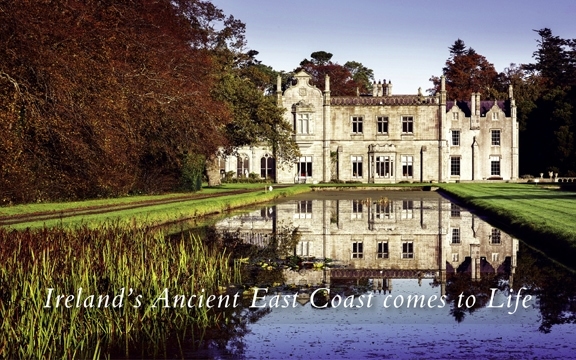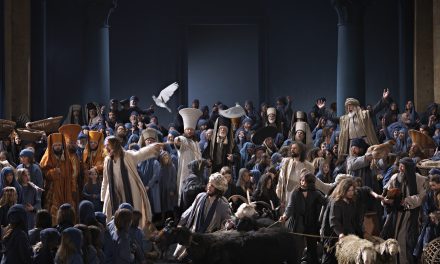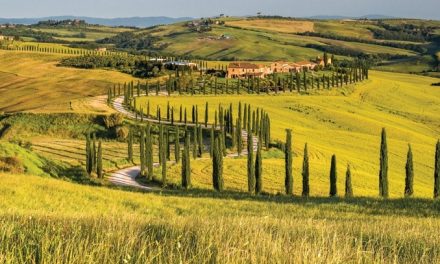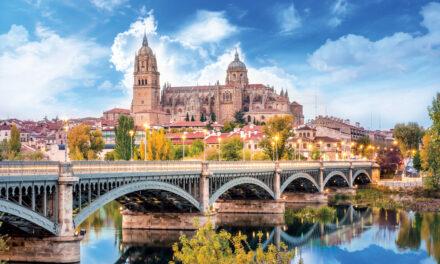Ireland
Ireland’s Ancient East Coast comes to Life
Article and photography by Ilona Kauremszky

Ireland is one of those magical places on earth where the land of make-believe becomes real if only for a moment. Case in point: The brooding edifice that sits atop Kilmantin Hill in County Wicklow is out of this world.
Beneath the creaky floorboards and a squeaking slamming door, I come to realize the breathy gasps following me are mine as I head down a stone cold stairwell into the strange unknown. There’s nothing but a deathly silence here. Senses running in overdrive, I’m peering to the other side standing vulnerably safe by a bolted door rarely swung open, delving deep into the black abyss of a dungeon that’s never seen the light of day.
The ghost stories heard earlier on my guided tour seemed unbelievable until that moment. A ghostly visage of a woman flashes before me then suddenly vanishes without a trace.
“You see that?” I ask a fellow visitor, jumping back from the original dungeon that has reopened for the first time in nearly 100 years.
“No, what?”
Her answer is the giveaway at the historic Wicklow Gaol where people were deemed to be on the wrong side of history. In Wicklow, meaning “Viking Meadow,” tourists vacate bustling Dublin for the slower country pace, a contrast that starts the moment you drive an hour south from the capital.
Welcome to Ireland’s Ancient East Coast. Ireland’s newest tourist network, home of turrets, treasures, and some of the island’s oldest bragging rights is fueled by mystery and mad tales of Vikings, Celts and fairies. Stretching from Carlingford, County Louth down through Newgrange and the Boyne Valley with splendid towns in between, this southeast pocket of Ireland is known for its sunshine and beautiful beaches. The compact area provides the culturally curious types off-the-beaten-path places culled from 5,000 years of European history.
County Wicklow
We hit the pedal to the metal and veer straight into the Garden of Ireland in County Wicklow. The bold moniker is due to a collection of fine garden estates.
At Killruddery House, the 17th century gardens are the oldest in Ireland. A noblesse nod to the Gardens of Versailles (the Huguenet gardener modeled Killruddery’s after Versailles), the long mirroring ponds stretch beyond the grand residence which has been a stand-in for movie blockbusters, among them “The Tudors.” In the garden, guests enjoy tea afternoons and embark on a fascinating guided house tour.
Home to the Earl of Meath, the Brabazon family has resurrected a Tudor Revival Mansion masterpiece from post-World War II neglect when the then Earl resided elsewhere. Today, visitors can explore this living working house garden and farm, which since 1618 has been home to 16 generations of the Brabazon family. The rooms are bedecked in original art and furnishings, most of which were culled in the 1800s during a 3-year buying trip to mainland Europe by John Chambre Brabazon, the 10th Earl of Meath’s eldest son William and daughter-in-law Harriet.
The Orangery is a token to the lady of the house, Harriet who sold her tiara to create this glass statement piece inspired by the Crystal Palace in London. The private residence is revered as the most successful Elizabethan-Revival mansion in Ireland.
Ironically 30-minutes south from this House of Fortune a whole different world unravels at the Wicklow Gaol. Thrill seekers dare to enter one of the most haunted places in Ireland. They say those who were locked away there in the 18th century are still in residence. The House of Horror incarcerated thousands during Ireland’s harshest history (think the 1798 Revolution, the Great Famine, and the 1916 Easter Rising). I took my own personal ghostly encounter and filed the experience under ‘unexplainable’ counting my lucky stars that this unexpected discovery was one of many along a trek I took along Ireland’s Ancient East Coast.
Throughout this storybook setting, the landscape morphs into a quilt of rural scenes held together by fields of green. No big billboards here. It’s just the wide expanse of blue skies hitting the hillsides to palatial places like Powerscourt, owned by tennis ball tycoon, the Slazenger family. Rounded mounds named Little Sugar Loaf Mountain (known for its quartzite) for the obscure shape seem to have been created by giants. In between the 50 shades of green proud homeowners care for their immaculate cottages, cows graze in the pastures, while ruins of ancient kingdoms litter the countryside – a testament to Ireland’s deep-rooted history.
County Meath
Mel Gibson’s blockbuster Braveheart was filmed in Ireland’s oldest Anglo-Norman castle. Now visitors amble to the rooftop of Trim Castle, the town’s biggest tourist attraction and head inside a mini-museum of Braveheart clad costumed volunteers who were extras in the movie to showcase medieval military wardrobes and weaponry to kids and day trippers.
Considered the New York of Medieval Ireland, Trim was a hot bed of industry, commerce and skilled labourers converging on the River Boyne with a state-of-the-art mint and a sewer system. These days, paddlers float upriver to see more medieval buildings than anywhere in Ireland. The biggest, the largest and the oldest like Ireland’s first unaltered bridge built in 1393 are within a 4-minute stretch.
County Wexford
In Hook Head, the sea opens up. The rugged peninsula tickles the imagination on what once was. In the past, the sea has swallowed hundreds of ships, sending many a vessel and all its mariners to a watery grave. William Marshall, Earl of Pembroke and Strongbow’s son-in-law, who was a powerful knight of his day, erected this lighthouse to divert ships from the treacherous Irish Sea.
Considered the world’s oldest operational lighthouse, the 800-year-old Hook Lighthouse is a black and white cylinder that topples the pancake plain. Visitors partake in a guided lighthouse tour fueled with hologrammed characters narrating stories and ascend the corckscrew 115-steps to the observatory for birds’ eye views.
Hook Head also lays claim to the country’s most notorious haunted house. At Loftus Hall, those who dare to mingle with spirits embark on a peculiar guided tour in the dark. The resident ghost, a young woman named Lady Anne is known to appear when least expected.
We leave Hook Head behind with its gales and tales, ready to take another detour along Ireland’s Ancient East. Who knows what fairytale or ghostly apparition will come to life around the bend.
www.ireland.com
Click on cover to view published article






